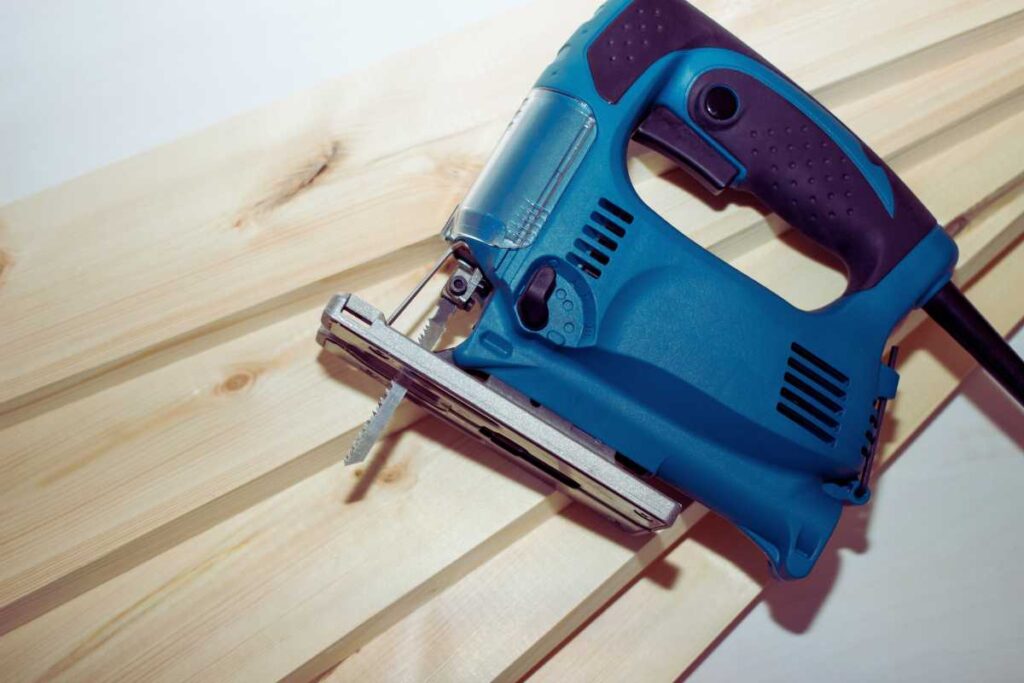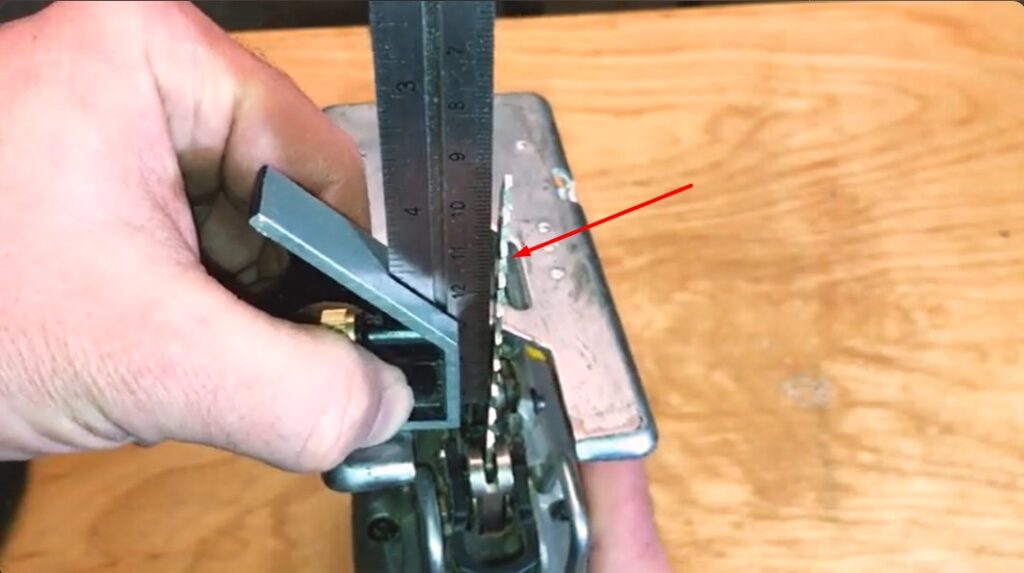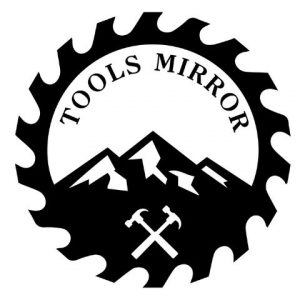Do you love fixing things or creating amazing projects out of wood? 🪵🔨 If you do, then you probably know about a super handy tool called a jigsaw. It’s a must-have for any DIY enthusiast!
It’s crucial to know how to fix jigsaw blade alignment for making accurate cuts. However, you can do this by simply loosening the blade, readjusting it, and then tightening it back up. 👋
Poor blade alignment can cause the blade to veer off course, leading to jagged or crooked cuts. But don’t worry, fixing the alignment is a breeze and can be done quickly. With just a few simple steps, you can adjust the blade to ensure it’s perfectly aligned and ready for precise cutting.
Today, we’re going to dive into how to fix jigsaw blade alignment. Don’t worry, I’ll explain everything in a way that’s as easy as talking to a little brother or sister. Let’s get started!

Why Jigsaw Blade Alignment Matters?
A jigsaw is a super cool tool that helps us cut different shapes out of wood, plastic, or even metal. Imagine you have a magical pencil that can cut things instead of drawing them. Cool, right? 😊
Now, if the blade in your jigsaw isn’t straight, it won’t cut straight lines. It’s like trying to draw a straight line with a wiggly pencil. You’d end up with a wobbly line, and that’s not what we want, is it? Proper blade alignment makes sure your cuts are perfect, and your projects look awesome! 👍
Signs of Poor Blade Alignment
How do we know if our blade is all wonky? Here are some signs:
- Inaccurate cuts: A blade that is not aligned properly can result in cuts that veer off the intended line, making it difficult to achieve the level of precision you need for your project.
- Jagged edges: If the blade tends to wobble, it can create unwanted serrated edges in your cuts. Additionally, the blade shakes a lot.
- Decreased speed: Poorly aligned blades can also mean slower cutting speeds. This can be frustrating, especially when you have a lot of cutting to do.
- Noisy cutting: The jigsaw makes weird sounds if it is not aligned properly.
- Burn marks: If you notice burn marks on the wood, this is also a sign of miss aligned blade.
- Safety risks: Lastly, if the blade is not correctly aligned, it can increase the chances of kickback and other accidents.
Tools You Need
Before we start fixing, let’s gather some tools:
- New Jigsaw Blade: Just in case we need to replace the old one.
- Screwdriver: To open and adjust parts.
- Brush or Cloth: For cleaning.
- Square: To measure angles and ensure that the blade is precisely aligned with the cutting surface.
- Adjustable wrench: To tighten the assembly’s screws, making sure the blade is locked securely in place.
- Allen wrenches: For adjusting set screws in the blade assembly.
- Pliers: If the blade is bent or damaged, a pair of pliers can help you to straighten it out. Pliers can also come in handy if you need to loosen or tighten any stubborn bolts or screws.
Safety First!
Safety is super important! We don’t want any boo-boos. 😢 So, make sure:
- The jigsaw is unplugged. We don’t want it to turn on accidentally.
- Wear safety goggles. Protect those eyes! 👀
- Keep your fingers away from the blade.
Step-By-Step Guide To Fixing Jigsaw Blade Alignment
Jigsaws are handy power tools that make cutting various materials simple. However, blade alignment problems could severely impact its effectiveness. We’ll go through the steps to diagnose and fix blade alignment issues properly.
Unplug and Prep Your Jigsaw
First things first, unplug the jigsaw. We’re going to give it a little check-up, and we don’t want any surprises. It’s like making sure your toy car is turned off before fixing it. 🚗
Remove the Old Blade
Next, let’s carefully take out the old blade. Usually, there’s a screw or a clamp holding it in place. Use your screwdriver to loosen it up. It’s like untying your shoelaces before taking off your shoes. 👟
Clean the Blade Holder
Once the blade is out, let’s clean the holder. Use your brush or cloth to remove any dust or wood bits. Imagine cleaning your room; we want everything neat and tidy. 🧹
Insert the New Blade
Now, grab the new blade. Make sure it’s the right one for your jigsaw. Slide it into the holder where the old blade was. It’s like putting a new crayon in your crayon box. 🖍️
Check for Proper Insertion
Make sure the blade is snug and secure. Wiggle it a bit to see if it’s tight. If it’s loose, it might fall out, and that’s not good. It’s like making sure your puzzle piece fits perfectly. 🧩
Adjust the Blade Guide
Look for the blade guide. This part helps keep the blade straight. Adjust it so the blade stays in the middle. It’s like adjusting the seatbelt in your car; we want it just right. 🚗
Test the Alignment
Plug the jigsaw back in and turn it on for a quick second. Watch the blade; it should move straight up and down without wobbling. If it does, hooray! You did it! 🎉 If not, don’t worry. We can adjust it again.

Importance Of Adjusting Guide Roller, Bearings, And Mounting Mechanism
There are three areas that you need to adjust to fix blade alignment issues in a jigsaw, namely the blade guide roller, bearings, and blade mounting mechanism. Here are the key things to know about each of these areas:
- Blade guide roller: This part of the jigsaw helps to support and guide the blade’s movement. If it’s not correctly aligned, the blade will not work as it should.
- Bearings: Jigsaws have two bearings, one at the top and the other at the bottom, to support the blade’s movement.
- Blade mounting mechanism: This part of the jigsaw holds the blade in place. If it’s not working correctly, the blade will not remain in position, resulting in alignment issues.
How To Use The Square To Check The Alignment?
One simple tool you can use to check blade alignment is a square. Ensure that the jigsaw base is square to the blade before you make any adjustments. Here is a brief step-by-step guide on how to gauge blade alignment and make adjustments:
- First, unplug the jigsaw from the power source and remove the blade.
- Next, place the square against the jigsaw base plate’s edge and blade.
- Check the blade’s alignment using the square. The square should meet the blade teeth at perfect right angles to confirm the alignment. If you notice a gap or an overlapping, that means the blade is not aligned correctly.
- To adjust the blade alignment, loosen the screws on the bearings and make the necessary adjustments.
- Next, check the lateral and front-to-back movement of the blade by moving it around while still attached to the jigsaw. If you notice any movement, adjust the blade guide roller to solve the issue.
- Lastly, check the blade’s mounting mechanism. Tighten all the screws and bolts to ensure that the blade remains in position.
Common Mistakes To Avoid When Fixing Jigsaw Blade Alignment
Jigsaw blade alignment issues can be frustrating, especially when you have an important project to complete. Fixing blade alignment is not rocket science, but there are several common mistakes people make while trying to fix them.
Here are some common mistakes to avoid when fixing jigsaw blade alignment:
- Neglecting to check blade position before tightening
- Not using manufacturer recommended parts and lubricants
- Over-tightening screws and bolts
- Not using the right sized Allen wrench
Tips For Maintaining Proper Jigsaw Blade Alignment
To keep your jigsaw happy:
- Clean it regularly: Dust and bits can cause problems. Remove the blade regularly and clean the mounting area to avoid corrosion build-up.
- Check the blade often: Check the alignment of the blade before each use.
Replace it if it’s dull or bent. - Lubricate it regularly: Use a good quality lubricant for smooth movement of the moving parts of the jigsaw.
- Store it properly: Keep it in a dry, safe place.
Be gentle when moving the blade between its mounting position and the laid-back position.
Conclusion
Fixing your jigsaw blade alignment might seem tricky, but with a little patience and the right steps, you can do it! Remember, practice makes perfect. Soon, you’ll be making straight, awesome cuts like a pro. Happy crafting! 😊
FAQs Of How To Fix Jigsaw Blade Alignment
Why Does My Jigsaw Blade Keep Bending?
Your jigsaw blade could be bending caused by applying improper pressure to the saw or using a dull blade.
How Can I Prevent My Jigsaw Blade From Drifting?
To prevent your jigsaw blade from drifting, ensure the blade is sharp, use the right blade for cuts, and reduce speed.
What Can Cause My Jigsaw Blade To Cut Crooked?
A misaligned guide roller, bent blade, worn-out roller, or dull blade can cause your jigsaw blade to cut crooked.
How Do I Align My Jigsaw Blade With The Guide Roller?
To align your jigsaw blade with the guide roller, check to see if the blade is straight, use a square, and set the blade depth.
Can A Misaligned Jigsaw Blade Damage The Tool?
Yes, a misaligned jigsaw blade can cause breakage, premature wear, and damage to the blade clamp and saw.
How often should I check the blade alignment?
It’s good to check before each big project or if you notice wobbly cuts.
Can I use any jigsaw blade?
No, make sure the blade is the right type and size for your jigsaw.
Why does my jigsaw make loud noises?
It could be that the blade is not aligned or that it’s hitting something inside. Check and adjust the blade.
Recent Posts
Woodworking in 2025 is all about efficiency, precision, and smart technology. Whether you're a beginner or a seasoned craftsman, having the right tools can make all the difference. Here are the top 7...
Ever tried drilling into a piece of wood only to end up with a splintered mess or a wobbly hole? Yeah, it's more common than you think. Wood might seem like an easy material to work with, but...

